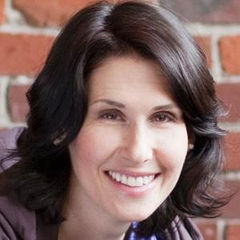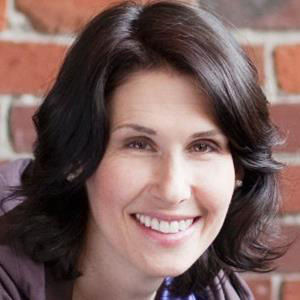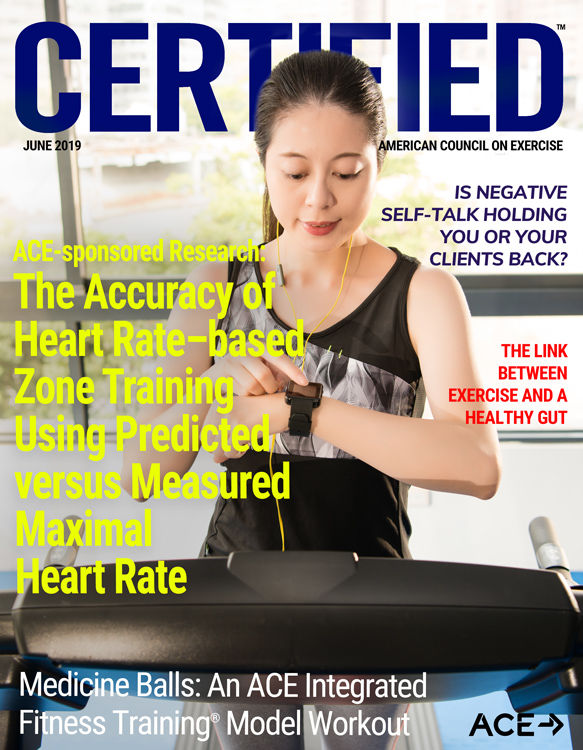
You probably got into teaching group fitness because you loved the rush of moving to music, connecting with participants and ultimately helping others enjoy health and fitness. Most instructors never lose that feeling, which is why they continue to teach for years or decades. However, the more experience and skills you gain, the more you might hope to take your talents to the next level. But how? There are options such as becoming a manager, presenter and/or studio owner, but what if those aren’t your aspirations? In what other ways can instructors climb the ranks? Keep reading for ideas on how to advance in group fitness without bumping up against a possible ceiling to your success.
The Ceiling to Advancements in Group Exercise
The fitness industry offers countless career possibilities, but getting to the next level in group fitness specifically can feel a bit limiting for some instructors. Why is that? There are multiple reasons. For one, freestyle classes are no longer the norm, which means that once-sought-after skill isn’t in demand like it used to be.
“Group fitness has become very branded and trendy,” says Kimberly Dawson, MS, EPc, owner of The Fitness Studio by KIM in Tahlequah, Okla. “This could be perceived as a barrier to advancement for many seasoned fitness instructors who have been creating all of their own content, class styles and workouts based on knowledge.” While some instructors appreciate the convenience of prechoreographed formats, others might feel as if it’s a step backward after years of independence with freestyle classes.
Another reason for a perceived ceiling has to do with conventional career norms in the industry. “While the fitness industry is still relatively young, the traditional approach of brick-and-mortar facilities where people come to exercise hasn’t really evolved all that much,” says Gillian Goerzen, a health and fitness coach and owner of Super You Fitness & Nutrition Coaching in Nanaimo, British Columbia. “And traditional roles within that model haven’t evolved either. The logical steps of evolution for instructors and trainers are to present, own or manage.”
There’s a perception that to get promoted in group fitness, you must be doing something beyond everyday teaching. “Experienced instructors feel they hit a ceiling because they perceive success and validation as being selected as a presenter, director, group fitness manager or other fitness-industry position outside of teaching in the group exercise studio,” says Beth Kageyama, RDH, a registered dental hygienist and an instructor at 24 Hour Fitness and Gold’s Gym SoCal. There’s some truth to this perception: While personal trainers can make a career out of training on the gym floor most of the day, it’s nearly impossible to sustain full-time work teaching classes.
Additionally, with experience and the desire to evolve comes age. Some instructors might feel as if they’ve “aged out” of teaching certain classes. “As I have aged in this business, my participant demographic has changed drastically,” says Dawson, who’s been teaching for 22 years. “I no longer get the 19- to 25-year-olds as the norm. My new norm is 35 and older. Does that mean I can’t successfully teach a younger audience or that I must start targeting an older audience? I don’t think so, but the participant I attract is older versus 10 to 15 years ago. In my experience, the age dynamic affects what class types are well attended and the level at which I can teach (modalities and progression).”
Finally, there’s the pay. Despite the fact that, in 2018, U.S. health club industry revenue increased to $32.3 billion (an increase of 7.8% from the previous year), most instructors would say that their pay rates haven’t changed much over the years. “The industry does not reward experience by paying a higher hourly rate to the experienced group fitness instructor,” says Vaughn. Teaching for a studio or club almost always means there’s a definite pay ceiling. When experienced instructors hit that threshold, opportunities for financial advancement tend to plateau, which can eventually diminish motivation.
“One of the challenges we currently face is that instructor pay rates are still very low, especially in smaller towns,” says Goerzen. “It can be tough to stay motivated to design and teach really powerful classes when you’re being paid less than minimum wage, if you take into consideration travel time, prep time and class time.”
“I teach a lot of classes during the week—sometimes 25 plus—and it can be exhausting,” says Andrea Cladis Hodge, MFA, an Illinois-based Elite Trainer and instructor who teaches a variety of formats, including Barre, HIIT, kickboxing, aqua, cycle, BOSU and boot camp. “For a while, I just wanted to teach. However, I soon realized that income-wise it was not feasible to just be a fitness instructor. It was treated by others as a hobby, even though it was my only job for a few years. I had to find more full-time employment and then supplement with fitness. I was really discouraged by this, as I no longer had the time to prep, plan and execute the best classes possible. I truly think financial limitations are a huge challenge. Group exercise instructors are not paid nearly enough for their time, effort, talent and education.”
All these factors leave some instructors wondering what their next steps should be. Once you’ve reached a certain status, how far can teaching group exercise really take you?
How to Advance—Without Leaving Group Exercise Altogether
Give Yourself a “Promotion.” “There are so many ways to evolve and grow as a fitness professional if you just step out of the box and get a little innovative,” urges Goerzen. “When I first started, I taught a lot of traditional classes, like basic total-body strength, Spinning and boot camp. As I’ve evolved in my own fitness philosophy and gotten additional training, I’ve incorporated more mindfulness, yoga and functional training.”
“Sometimes what’s next is to think creatively about what you can provide or give to this industry or your local community that is not already there,” says Hodge. She suggests asking yourself what you would like to ultimately achieve. Then go after it!
There’s no rulebook that says you have to wait for someone else to promote you. This industry is flexible enough that you can give yourself a “promotion.”
“In the last few years, I’ve really owned my expertise and instead of relying on the growing trend of ‘format classes,’ I’ve designed my own,” says Goerzen. “My class incorporates mindfulness/mantra, tai chi, dynamic movement, resistance band functional strength, HIIT and yoga—all in one class. Designing the format really challenged me to think outside the traditional fitness box.”
Hodge has taken a similar path. “Teaching classes that I have designed gives me freedom to experiment with new formats,” she says. “No other instructor can perfectly replicate my classes, so that gives me a layer of individuality that motivates me to keep that edge and work hard for my clients. Plus, when I’m teaching something I designed, I am more engaged and better suited to instruct others to reach their full potential.”
What’s exciting is that when you run a self-designed class as an independent contractor, your ability to increase per-class revenue grows substantially because you’re not bound to a club’s limited pay scale. Rather, you charge each participant a fee that, when combined, reflects the class rate you’d ideally like to receive. You could offer the class on a drop-in basis or run it as a program lasting something like four to eight weeks. To do this, you might rent gym space at a local studio or community center, run outdoor classes (with permission from the city) or teach tech-based virtual workouts. Let your skills and interests guide you.
Of course, designing and refining your own class from scratch can be time-consuming, so another option is to branch out as an independent contractor but with a branded program that’s already been created. “I recommend obtaining specialty certifications to broaden your toolbox and make you more marketable,” says Michele Vaughn, MS, a health and fitness expert in Marin County, Calif., and faculty member at The College of Marin in the Kinesiology Department. For example, you might be able to set your own fees to teach a popular branded program in areas that don’t currently offer that style of class.
Streamline Your Teaching. With all the formats available to teach these days, it can be tempting to feel as if you need to take on more classes to keep advancing. But the opposite can sometimes be more effective. Instruct less as a way to refine your efforts and create higher demand for the class(es) you do teach.
“It’s O.K. to let go of a class or format if it is not serving you or your members well,” says Kageyama. Sometimes that feeling of spinning your wheels has to do with taking on too much. Adds Kageyama, “Learn how to say ‘no.’ It’s O.K. if you don’t want to add another class to your schedule.”
If you’re worried about a pay decrease from cutting classes, consider other avenues within fitness that would complement your teaching. For example, becoming a small-group personal trainer or health coach would allow you to parlay your existing skills as a group leader and motivator into these new career roles.
Keep Learning. Burnout can happen when there’s a perceived lack of opportunity for advancement. However, keeping up with continuing education goes a long way toward setting you up for success if and when a promotion is possible. It also helps you develop new, exciting strategies for giving yourself a promotion, as discussed above. “In order to personally advance,” says Hodge, “continuing education has been paramount to my levels of satisfaction. Remaining inquisitive keeps me fresh and excited to assist clients and share knowledge.”
“We give so much of ourselves physically, mentally and emotionally that it is inevitable we will become burned out,” says Vaughn. “For me, it is very important to go to workshops and conventions, read articles, and take online courses.”
Advocate for Your Own Advancements
The fitness industry is slowly evolving to include many more options for how and where we teach group fitness. Although change doesn’t always happen as fast as we’d like, there are still numerous ways that instructors can advocate for themselves and bust beyond any ceiling that could limit success.
“There doesn’t have to be a ceiling,” says Hodge. “What you do, create and develop adds value to the lives of those around you. You are an educator, leader, expert, motivator and source of inspiration!”
Use the same creativity and inspiration you pass on to your participants to elevate your own instructor endeavors. “By thinking out of the box, we can create innovative jobs for ourselves that meet our unique needs as individuals and better serve our clientele,” says Goerzen.





 by
by 


